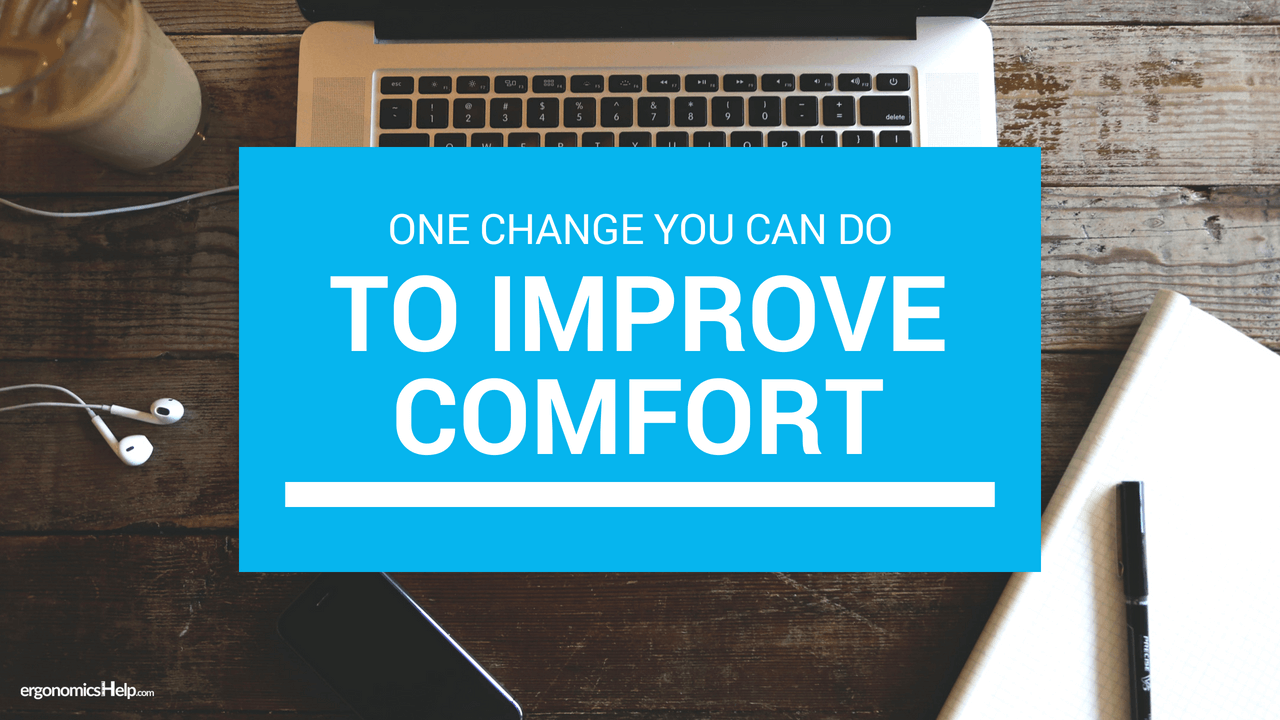One Change You Can Do To Improve Comfort
May 08, 2019
A client I consulted with last week had an extremely common workplace ergonomics situation, one which I have seen in many workplaces before. By the end of this blog post you will have some quick-win solutions that you can implement.
The most popular chair adjustment
The one chair adjustment that staff not only were enthusiastic about but almost all staff commented of improved comfort afterwards was the adjustment of the depth of the seat pan of their chair. For about 99% of the 30 workstations that were reviewed, the seat pan depth was lengthened. All staff immediately commented that their lower back felt better because of this. Of course, this was along with other adjustments to the workstation, including changes to chair height, monitor height, and armrest height.
The biggest adjustment to improve discomfort
Before the assessments, I asked for all interested staff to complete a pre-session online discomfort survey. I use this as a standard step in ergonomic consultations. The results of the survey indicated many cases of sore upper extremities, including shoulders, neck, and arms. In this workplace, both the keyboard and mouse were placed on top of the desk and each desk was a standard height; about 73 cm (29”) from the floor height. The majority of people there had a neutral elbow height that was below their keyboard/mouse height. The fact that the neutral elbow was so much lower than the work surface height was directly proportional to the amount of discomfort that was noted in the pre-session surveys.
They wanted to implement quick fixes
So what was done? The primary concern was to get the neutral elbow height slightly above the keyboard/mouse height. By doing this, the shoulder muscles could be relaxed, allowing for an eventual reduction in discomfort overtime.
How was this done? Each chair needed to be raised until the neutral elbow height was slightly above the keyboard and mouse height. I had my measuring tape handy to double check measurements. It is really important to note that by raising everyone in their chairs, there was a significant gap between each person’s feet and floor. Ensuring that the worker’s feet are either firmly placed on the floor or supported by an aid is tremendously important as it eliminates the risk for lower back discomfort. The client wanted a quick and do-able solution, so printer paper stacks and textbooks were put underneath each staff member’s feet. This allowed the feet to be in firm contact with the ground and removed the risk for lower back discomfort. It was a cost effective solution. This is especially true when considering the potential for the reduction in the amount of time employees could be off work due to lower-back injury.
After the neutral elbow height was put into place, each staff’s monitor height needed to be re-adjusted to the their raised eye height. In most cases the monitor needed to be raised. So, as a cost effective solution, text books or printer paper was again placed below each monitor. After all of the adjustments, staff commented that they felt more comfortable. This was considered to be a big win!
The use of books and paper is the farthest thing from visually pleasing. However, a simple hack would be to first cover the paper with plastic bags for protection and then cover the entire stack with cheap fabric or an old sheet. I’ve used this in the past with great success. Visitors to a past client’s office had no idea that stacks of paper were used in virtually all workstations.
One more quick fix
There was one additional change that was recommended to staff. Most staff used a conventional keyboard (pictured below) with a number pad that is connected to its right. If the user is also right handed, this design (number pad between lettered keys and mousing area) results in extreme and extended right arm reaches to mouse with the right hand. This type of reach is typically highly correlated with upper back and upper extremity discomfort.
A ‘simple’ ergonomic solution was recommended to any staff member who had a combination of conventional keyboard use, with right handed mousing, and moderate to extreme upper extremity discomfort. The recommended solution was to try left handed mousing. Left handed mousing with a conventional keyboard eliminates all right shoulder postures that are related to the reported discomfort. Also, left handed mousing aligns the mouse directly with the left shoulder, which is considered to be a neutral shoulder position. This means that this work position will be more comfortable for the user over time – especially when staff get used to left handed mousing!
One Last Thing…
If you liked this post, please share! It helps to get the word out!
